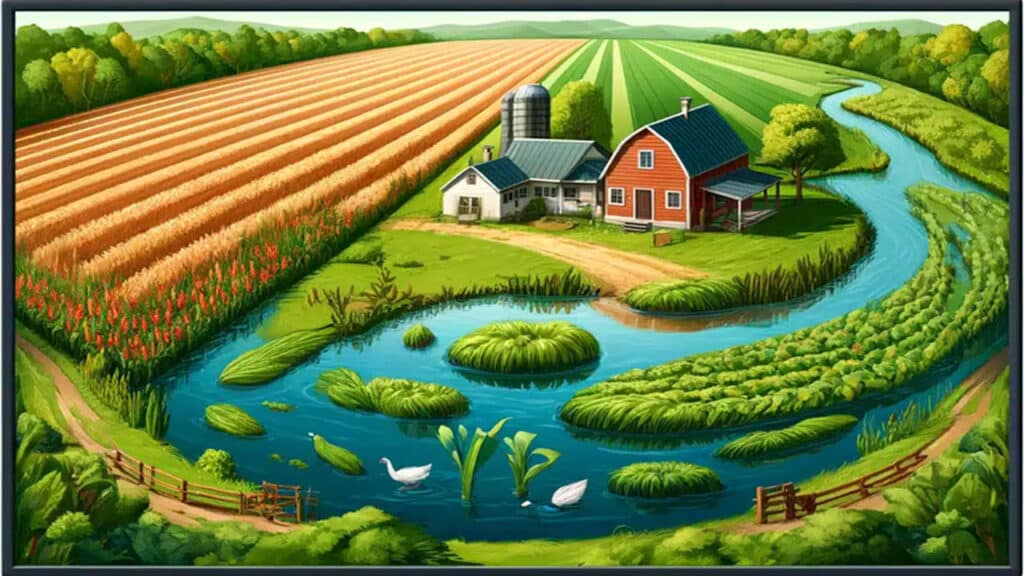
Introduction to the USDA Wetland Mitigation Banking Program (WMBP)

The U.S. Department of Agriculture (USDA) has allocated nearly $5 million in grants to support the Wetland Mitigation Banking Program (WMBP). This funding enhances the restoration, creation, or enhancement of wetlands to offset impacts from other locations. Since 2016, over $12.4 million has been awarded to partners in 11 states, leading to the establishment of 21 wetland bank sites.
The USDA recently presented a webinar focused on the Wetland Mitigation Banking Program (WMBP), which supports the development of mitigation banks to restore, create, or enhance wetlands. The webinar provided detailed insights into the process and requirements for establishing a wetland mitigation bank, covering topics such as program overview, application process, site selection, interagency review, Mitigation Banking Instrument (MBI), monitoring and management, credit release and sales, and case studies.
Webinar Summary
The WMBP Applicant Webinar provides detailed insights into the process and requirements for establishing a wetland mitigation bank. The following key topics are covered:
1. Program Overview
Wetland mitigation banking is a market-based approach that involves restoring, creating, enhancing, or preserving wetlands to compensate for unavoidable impacts on wetlands elsewhere. The program aims to ensure no net loss of wetland functions and values. Mitigation banks offer credits to developers and other entities needing to offset their environmental impacts.
2. Application Process
The application process involves several critical steps:
- Project Proposal: Outline the purpose, need, and benefits of the proposed mitigation bank.
- Site Plan: Provide detailed plans including maps, design specifications, and ecological goals.
- Financial Assurances: Demonstrate financial capability to complete the project and manage the site long-term.
3. Site Selection and Design
Selecting an appropriate site is crucial. Key criteria include:
- Ecological Viability: The site should support the target wetland type and functions.
- Hydrology and Soils: The site must have suitable hydrological and soil conditions.
- Connectivity: Proximity to other wetlands or protected areas can enhance ecological benefits.
Design considerations involve creating a site plan that outlines:
- Grading and Hydrologic Modifications: Ensure proper water flow and retention.
- Vegetation Plans: Use native species to establish a resilient wetland ecosystem.
4. Interagency Review
The Interagency Review Team (IRT) plays a pivotal role in evaluating and approving mitigation bank proposals. The IRT typically includes representatives from:
- USDA: Provides guidance on agricultural and conservation practices.
- USACE: Oversees compliance with the Clean Water Act.
- EPA: Ensures environmental protection standards are met.
- State and Local Agencies: Address regional environmental concerns and regulations.
5. Mitigation Banking Instrument (MBI)
The MBI is a detailed agreement that outlines the terms and conditions of the mitigation bank, including:
- Objectives: Clear goals for wetland restoration or creation.
- Site Plans: Detailed maps and design specifications.
- Credit Release Schedule: Timeline for when credits become available based on performance milestones.
- Long-Term Management: Plans for ongoing maintenance and monitoring to ensure sustainability.
Public notice and comment are integral to the MBI approval process, allowing stakeholders to review and provide feedback.
6. Monitoring and Management
Continuous monitoring is essential to track the bank’s progress and ensure it meets ecological performance standards. Key aspects include:
- Monitoring Plan: Outlines methods for assessing vegetation, hydrology, and wildlife.
- Adaptive Management: Strategies to address unforeseen issues and make necessary adjustments to management practices.
7. Credit Release and Sales
Credits represent the restored or enhanced wetland functions and are released in phases as performance milestones are met. The process involves:
- Performance Milestones: Specific ecological benchmarks that must be achieved.
- Credit Sales: Developers and other entities purchase credits to offset their environmental impacts, providing financial support for the bank.
8. Case Studies
The webinar highlights several successful wetland mitigation banks to illustrate best practices and lessons learned. These examples showcase innovative approaches to site selection, design, and management that have led to successful restoration and long-term sustainability.
Conclusion
Setting up a wetland mitigation bank with the USDA involves detailed planning, interagency coordination, and commitment to long-term ecological monitoring and management. Adhering to these steps ensures the success and sustainability of wetland mitigation banks. For more information, watch the full webinar here.
